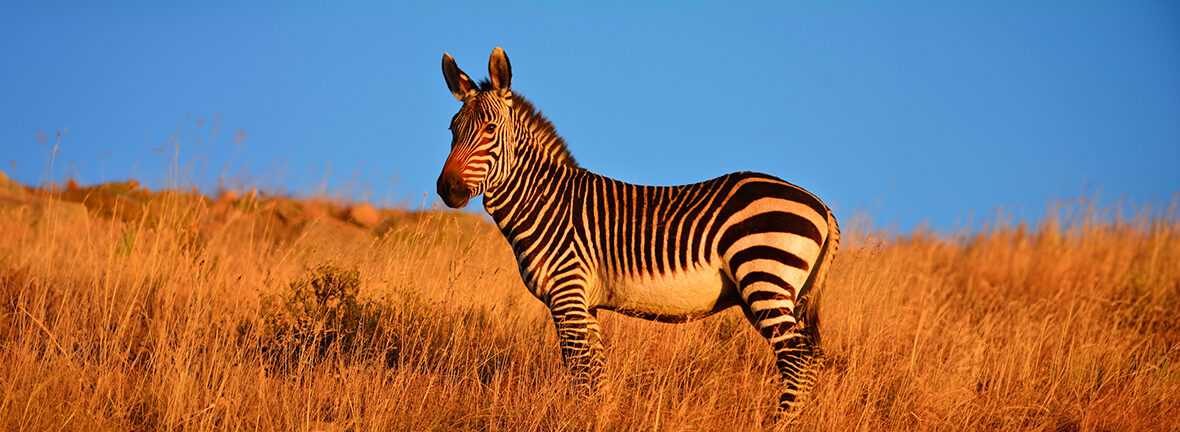
The mountain zebra is native to southern and southwestern Africa. There are 2 subspecies, the Cape mountain zebra and the Hartmann’s mountain zebra. These zebras face the threats of habitat loss and division at the hands of residential and commercial developments, farming, and ranching; hunting; trapping; and climate change, that causes severe droughts. As a result, the IUCN lists these equines as Vulnerable. But their populations are thankfully increasing.
First the Stats…
Scientific name: Equus zebra
Weight: Up to 820 lbs.
Length: Up to 8.5 feet, plus up to a 22 inch tail
Height: Up to 4.11 feet, at the withers (shoulders)
Lifespan: Up to 30 years
Now on to the Facts!
1.) There were an estimated 34,979 wild individuals as of 2018.
2.) Like all zebra species, mountain zebras are boldly striped in dark brown or black, and no 2 zebras look alike.
3.) Sexual dimorphism exists in these zebras in that females are larger than males.
4.) They prefer mountainous terrain, primarily escarpment with a variety of grass species. However, then can also be found among open grasslands, mountain slopes, woodlands, and regions with ample vegetation.
5.) These critters can be found at elevations of up to 6,600 feet.
But wait, there’s more on the mountain zebra!
6.) During the colder winter months, they migrate to lower elevations to stay warm.
7.) While they prefer tufted grass, in times of need, they will browse, consuming bark, twigs, buds, leaves, fruit, and roots.
Did you know…?
Mountain zebras can run at speeds of up to 40 mph!
8.) They need to drink every day. When water is scarce, due to drought, they will dig in dry riverbeds to obtain much needed water.
9.) The Cape mountain zebra and Hartmann’s mountain zebra are now considered allopatric (their ranges don’t overlap – preventing crossbreeding).
10.) Unlike plains zebras, mountain zebras don’t congregate into large herds. Rather, they group together in smaller herds consisting of a single adult male and up to 5 mares, with their offspring.
But wait, there’s still more on the mountain zebra!
11.) Females undergo up to a 12 month gestation (pregnancy) that yields a single foal.
12.) Foals are weaned onto solid forage in up to 3 years.
13.) In up to 37 months, the foal will move away from their maternal herd. After a short time alone, the males will join a bachelor herd, while the females are either taken into another breeding herd or they are joined by a bachelor male to create a new breeding herd.
14.) Bachelor males live in separate male-only herds, and mature bachelors often try to capture young mares to establish their own harem.
15.) Lions, hyenas, wild dogs, cheetahs, and leopards all prey on these and other zebras.
16.) Like other zebra species, they are diurnal (active during the day).
Now a Short Mountain Zebra Video!
Be sure to share & comment below! Also, check out the Critter Science YouTube channel. Videos added regularly!
Want to suggest a critter for me to write about? Let me know here.
Some source material acquired from: Wikipedia & IUCN
Photo credit: iNaturalist



